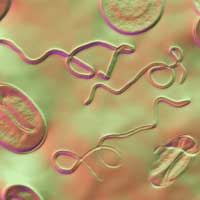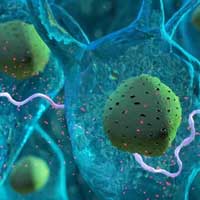Hidden Complications of Lyme Disease Treatment Unveiled by New Envita Study

Diagnostics are lacking, co-infections are rampant and Borrelia is evading the immune system; it is the most complex genome of any bacteria worldwide. Borrelia has a unique antigen shifting capacity which allows the infection to evade the immune system, constantly change its surface and with the help of biofilm prevent antibiotics from working. These factors and more make it a very difficult disease not only to detect but also to treat. However, a powerful new study spearheaded by Dr. Dino Prato and colleagues and featured in Open Journal Of Medical Microbiology titled, “Borrelia burgdorferi: Cell Biology and Clinical Manifestations in Latent Chronic Lyme,” offers an extensive overview of 157 published papers that provide crucial insight into the proper diagnosis and treatment of chronic Lyme disease. Dr. Prato's goal is to help patients where other doctors have failed and develop the newest, most effective treatments for patients suffering with Lyme disease.
Starting with an in-depth explanation of the Borrelia genome and pointing to key clinical factors, it paints a picture to help physicians and patients better understand what is really occurring in Lyme disease. The paper explains the severity of the Borrelia, its complexities, and complications in the diagnostics and clinical treatment. According to Dr. Prato, “There are so many complex factors to chronic Lyme disease it's so easy to see why many practitioners are not well equipped to diagnosis and treat it effectively.” Unfortunately, these oversights have led to widespread problem across the world for many patients whom are undiagnosed, or wrongly diagnosed and worse yet are unable to receive accurate treatment.
The methods for diagnostics are often not sensitive enough or are administered too early to detect antibodies associated with an infection by Borellia burgdorferi. This can result in patients performing testing for Lyme disease but coming up with false negatives or false positives. However, good clinical judgment and experience helps to identify and recognize these unique factors presented within each patient's presentation of the disease. In the thousands of patients that Envita has seen, the truth remains that getting proper testing is only a small battle compared to how to treat it.
Table 1: The following diagram is to better explain why certain conditions can be confused with symptoms associated with chronic Lyme disease. The symptoms found in chronic fatigue, fibromyalgia, rheumatoid arthritis, and Parkinson's disease are not exhausted in this table since the goal is to document the overlap of symptoms. Of the diseases listed in this table, the symptoms of fibromyalgia are more closely related to chronic Lyme disease. Issues in diagnosing Lyme disease over fibromyalgia is complicated by poor serologic diagnostic criteria associated with detecting Bb.
The graph below has been taken from the study published by Envita and Dr. Dino Prato titled Borrelia burgdorferi: Cell Biology and Clinical Manifestations in Latent Chronic Lyme
| Chronic Lyme Disease | Chronic Fatigue | Fibromyalgia | Rheumatoid Arthritis | Parkinson's Disease | |
|---|---|---|---|---|---|
| Fatigue | |||||
| Loss of Concentration/ Short Term Memory Loss | |||||
| Joint pain | |||||
| Poor Sleep | |||||
| Mood Problems/ Depression, Anxiety, etc. | |||||
| Muscle Skeletal Pain | |||||
| Neurological Presentation | |||||
| Muscle Stiffness |
Chronic Lyme disease is indeed a complex and real issue, and a bigger problem than the general medical community realizes because patients become immune compromised in addition to battling co-infections and other complicating clinical factors. Many times chronic Lyme disease is treated ineffectively with antibiotics, but better targeted treatments for chronic Lyme disease are coming forward. There are several crucial, overlooked indicators within the patients' immune system that may in fact provide a guide to whether antibiotic treatments will respond within a patient at all. Numerous other contributing issues discussed in the paper; genome of the infection, immune evasion, treatment of the disease, cellular process need to be considered in detail to establish proper medical treatment. Personalization in our opinion is likely the key to better diagnosis and treatment of chronic Lyme disease for patients.
Chronic Lyme disease is very complex and the symptoms, co-infections, immunity and other complicating factors vary from case to case, and each person's case can be unique and different. This is why personalization could be the strongest and most valuable tool moving forward in the fight against chronic Lyme disease. Armed with the correct scientific outlook and a detailed overview, we feel patients and practitioners can do better. Co-infections, patient's immunity and genetic inborn issues of metabolism amongst other factors play a vital role in the successful treatment of chronic Lyme disease.
The ultimate goal of this Borrelia study is to help provide a comprehensive clinical and biological overview to propel Lyme disease treatment forward. For over a decade our experience and dedication has been focused on helping patients be free of this disease. If you have any questions about Lyme disease treatment or our paper, contact us.























